Elixir Photometric Offsets
Synopsis
This page describes the comparison of the photometric zero-points generated by Elixir for MegaCam data with those computed using the SDSS as a reference. Two types of photometric offsets are studied. The first (the differential zero-point offsets) are the differences in photometric zero-point between different CCDs in the same image. The second (the absolute zero-point offsets) is the difference between the average zero-point of an image as determined from the SDSS and that determined by Elixir.
It is found that, for the most part, the differential zero-point offsets are on the order of 0.03 mags, but significant outliers exist. The absolute zero=points are fairly stable, for most bands, but offsets of up to 0.2 mags exist for the u-band. Tables of corrections are presented: one for the differential corrections one for the absolute corrections.
Background
Before MegaCam data is run through MegaPipe, the data is preprocessed in Hawaii using the Elixir software package. Elixir provides image detrending and an initial astrometric calibration. It also provides a photometric calibration, based on standard stars taken each night, as described on the MegaPrime calibration page. This photometric calibration is used as the basis of the MegaPipe photometric calibration, as discussed in the Photometric calibration section. of the MegaPipe stacking procedure.
Differential zero-point offsets
The differential offsets are the offsets between different CCDs of a single MegaCam image, regardless of whether the image was been taken under photometric or not. Ideally, the photometric zero-point should be the same across the MegaCam field. In practice, difference exist.
To investigate the differential zero-point offsets, the MegaCam archive was searched for images matching the following criteria:
- Each image must have an exposure time greater than 60 secs
- Each image must lie within the SDSS
- No two images with the same CRUNID should lie with 0.3 degrees of each other. (This is to ensure that the isolated patches of bad SDSS photometry don't affect the final result).
Each of the images was astrometrically calibrated using the standard MegaPipe pipeline. The photometric zero-points for computed separately for each CCD. The difference between the individual zero-points and average of all the zero-points was computed. Since the images where not necessarily taken under photometric conditions, the Elixir zero-point may or may not be valid, and therefore was ignored for this stage. The old i filter (I.MP9701) and the new i filter (I.MP9702) were treated separately.
The resulting differential zero-point measurements were aggregated by filter and CRUNID. For each of the CCDs, a median photometric zero-point offset was computed for each of the filter/CRUNID combinations. The individual and median zero-point offsets were plotted up. In these plots the black lines show the individual zero-point offsets (SDSS-Elixir) as a function of CCD number. The superimposed red line shows the median zero-point offsets. There is clearly some scatter about the median, indicated by the black lines and by the error bars (1 sigma). Two examples are shown below. (Others can be found in this tarball).
In some cases, the CCD to CCD variations are small, as shown in the figure below, for the r band, CRUNID=03AM05. Here the typical offset is 0.01 mags with an extreme range of about 0.03 mags
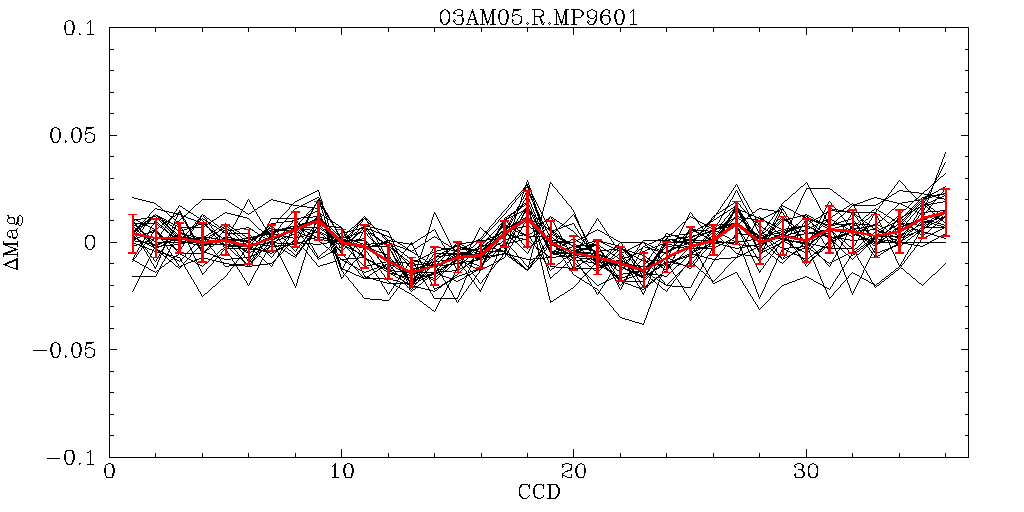
In other cases, the CCD to CCD variations are quite large as shown in the figure below for the (new) i band, CRUNID=08AM05. Here the typical offset is about 0.03 mags with an extreme range of about 0.09 mags.
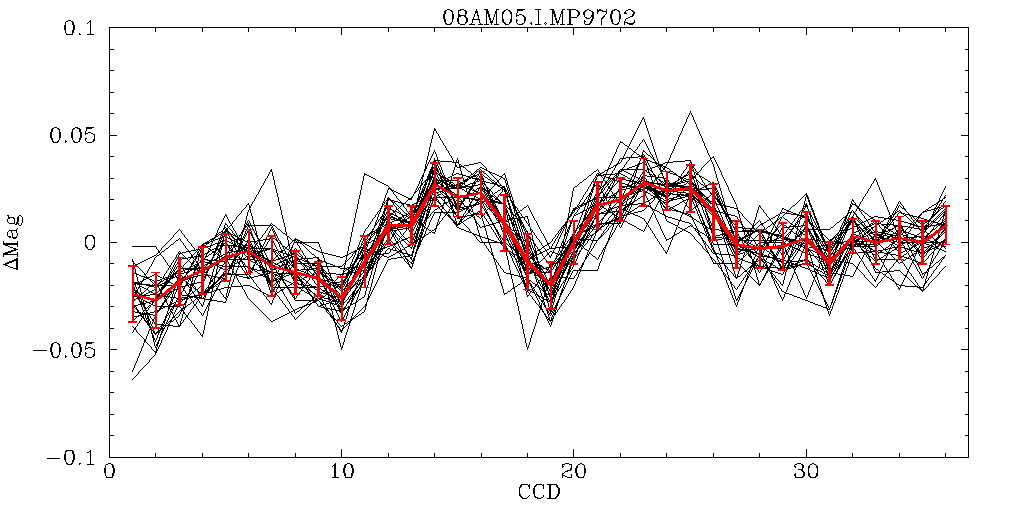
There is clearly considerable variation in the differential zero-point variations. Going through the plots sequentially, one sees definite changes over time. Further, at least in some cases, the amplitude of the offsets is large enough to warrant correction.
A table of offsets for all CRUNID from 2003 to the present was produced. The first two columns are the filter and the CRUNID. The next 36 columns contain the zero-point corrections, which should be added to the Elixir zero-point for each CCD.
The corrections were generated directly for CRUNIDs and filter combinations where there was enough data (more than 3 exposures per CRUNID/filter) to reliably do so. For the others, the corrections are interpolated between previous and subsequent CRUNIDs. Going the through the plots in the tarball in sequence shows that the corrections change fairly slowly over time, indicating that the interpolation is a sensible thing to do. The plots in the tarball corresponding to interpolated corrections are labeled with "Interpolated" in blue. Again, when one views the plots in sequence, the plots marked interpolated do no seem egregious. In addition, there a few cases where there are some data for a filter/CRUNID combination, but not enough to reliably determine the offsets. That is to say, there are filter/CRUNID combinations with more than 0, but less than 3 exposures. In this cases, the interpolated offsets agree well with the few measured offsets.
Absolute zero-point offsets
The next step is to measure the offsets of the MegaCam mosaic as a whole with respect to the SDSS. To measure this for a given image, one compares the Elixir zero-point determined from the header keywords to the zero-point determined by comparing the instrumental magnitudes of stars in the images to the magnitudes in the SDSS. As before, the MegaCam archive was searched for all suitable images. In this case, the criteria are slightly different. In order for the Elixir zero-point to be valid, the night must photometric. Whether or not a given night was photometric was determined using the SkyProbe plots. The patches of bad SDSS photometry are small (0.1 sq degrees at most) so the requirement that all the pointing must be different can be relaxed. The new criteria are then:
- Each image must have an exposure time greater than 60 secs
- Each image must lie within the SDSS
- The night must be photometric
For each image, the average zero point difference over all the CCDs between the SDSS and Elixir zero-point was measured. SExtractor is run on the image with MAG_ZEROPOINT=0. The resulting catalog is astrometrically calibrated using the standard MegaPipe system. The relevant part of the SDSS catalogue is retrieved from the SDSS data server. The SDSS magnitudes are converted to MegaCam magnitudes using the transformations described on the MegaCam ugriz filter set page. The transformations are:
u_Mega = u_SDSS - 0.241 (u_SDSS - g_SDSS) g_Mega = g_SDSS - 0.153 (g_SDSS - r_SDSS) r_Mega = r_SDSS - 0.024 (g_SDSS - r_SDSS) i_Mega = i_SDSS - 0.085 (r_SDSS - i_SDSS) (old) i_Mega = i_SDSS - 0.003 (r_SDSS - i_SDSS) (new) z_Mega = z_SDSS + 0.074 (i_SDSS - z_SDSS)
The image catalogue is matched to the SDSS catalogue. The difference between the instrumental magnitudes and the SDSS magnitudes yields the SDSS photometric zero-point. The Elixir zero-point is calculated from the header keywords as follows:
ZPElixir = PHOT_C + PHOT_K * (AIRMASS-1) + 2.5 * log10(EXPTIME)
The differential offset described above were also applied to the Elixir zero-points. Note that because differential offsets average to 0 over the whole mosaic (by design), applying these offsets only reduces the scatter of the individual CCD zero-points about the average zero-point, but does not change the value of the average zero-point.
The zero-point differences were then aggregated by filter and CRUNID. The median zero-point difference was computed as well as the standard deviation about this median. This is summarized in the table of absolute offsets. For some filter/CRUNID combinations, no data was taken on photometric nights. For other combinations, data is available for multiple photometric nights during a single run. In a number of cases, there is variation in the zero-point difference between two apparently photometric nights of the same run. The zero-point differences may be stable within a single night, but there are difference from night to night. In addition, there are occasionally variations in the zero-point differences within a single night, indicating that the night was not photometric.
The zero-point differences for the filter/CRUNID combinations were sorted into three categories, labeled "No_info", "Excellent", and "Marginal" in the table.
- No_info: No data was taken on photometric nights during this camera run with this filter.
- Excellent: Data was taken on a least two photometric nights during this camera run, and at least 6 images were taken on those nights, and the scatter about the median zero-point difference is less than 0.02 magnitudes.
- Marginal: There is some data, but it doesn't meet the criteria outlined above. Either data was not taken on more than one night, or less than 6 images were taken, or the scatter is large.
The plots that follow show the zero-point history of MegaCam for the ugriz filters. The measurements are grouped by CRUNID, as indicated by a column on the left side of each plot. The earliest data is at the top. The "Excellent" cases are shown in red. The "Marginal" case are shown in black. The average offset is shown as a green line.
Zero point history for the u-band. There is considerable variation, with some offsets as big as 0.25 magnitudes.
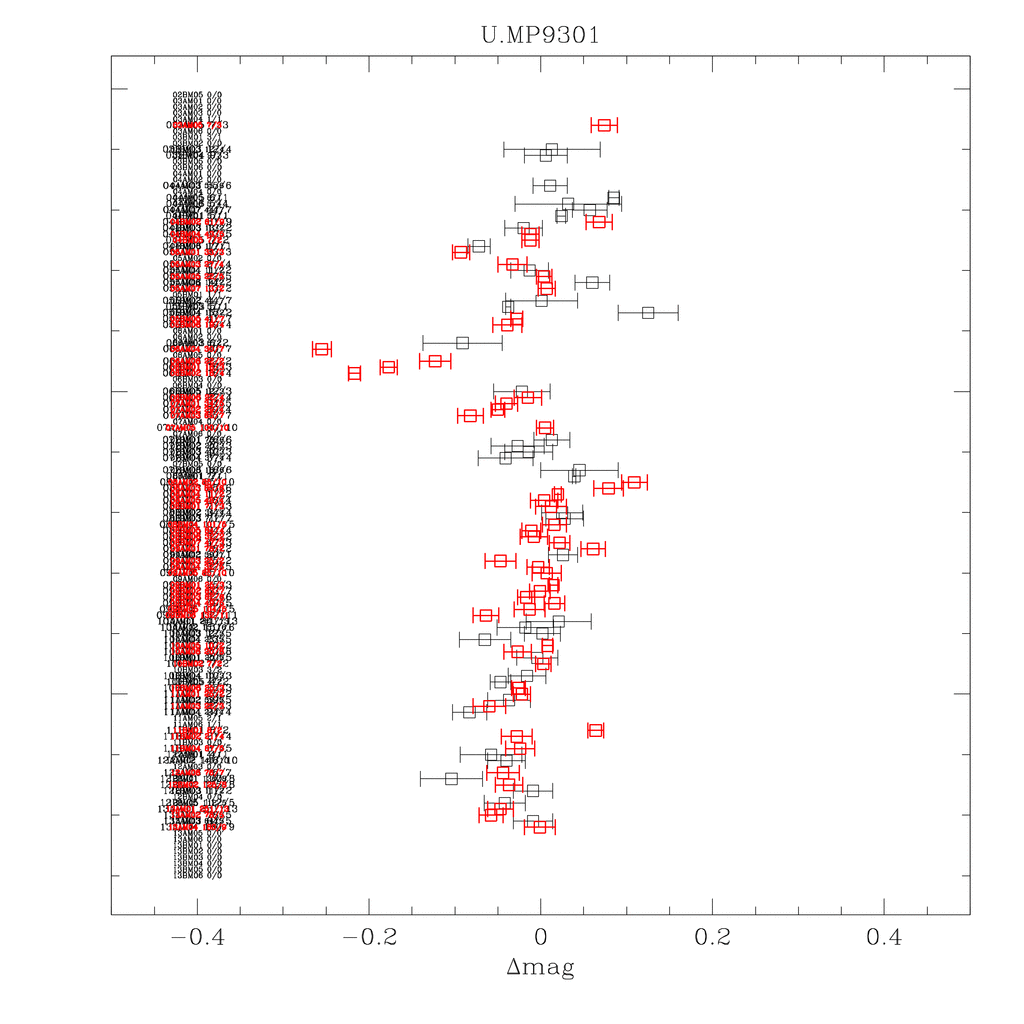
Zero point history for the g-band. Here the zero-point is much more stable.
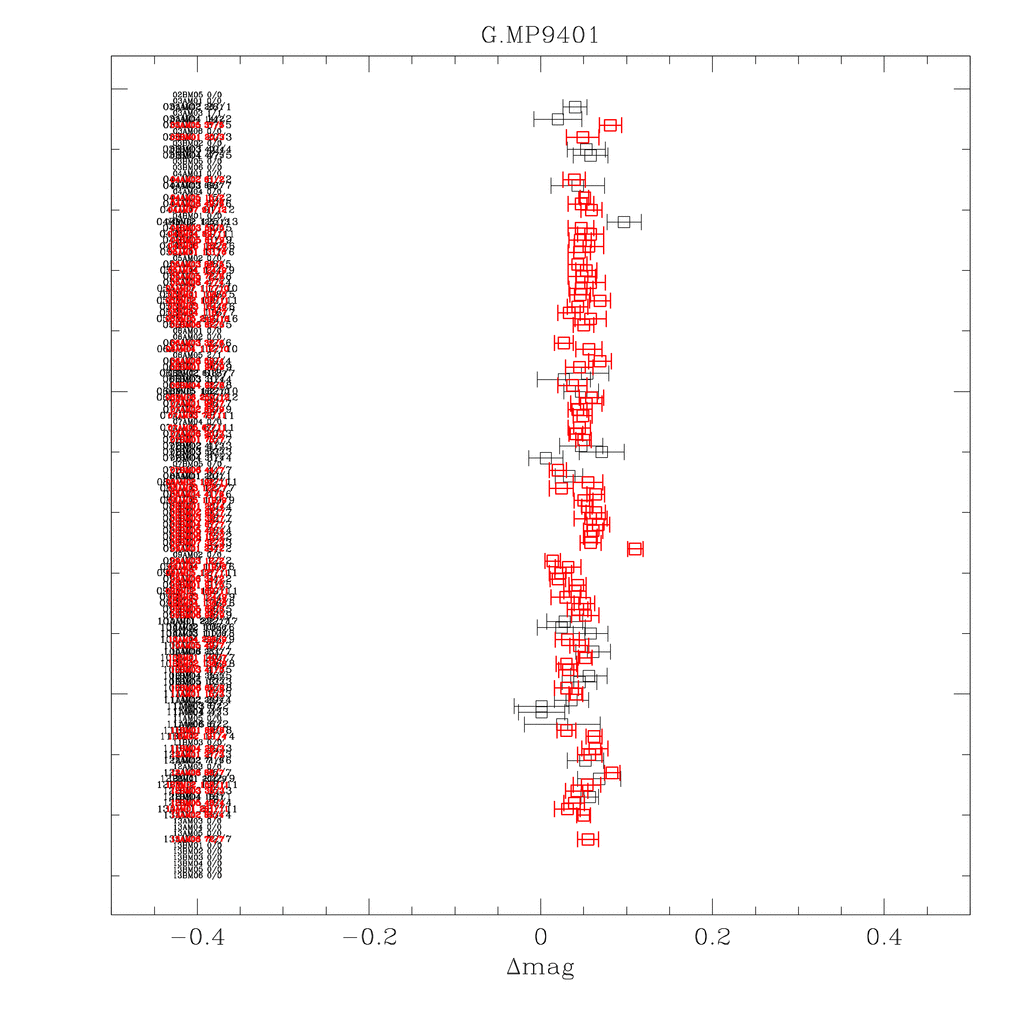
Zero point history for the r-band
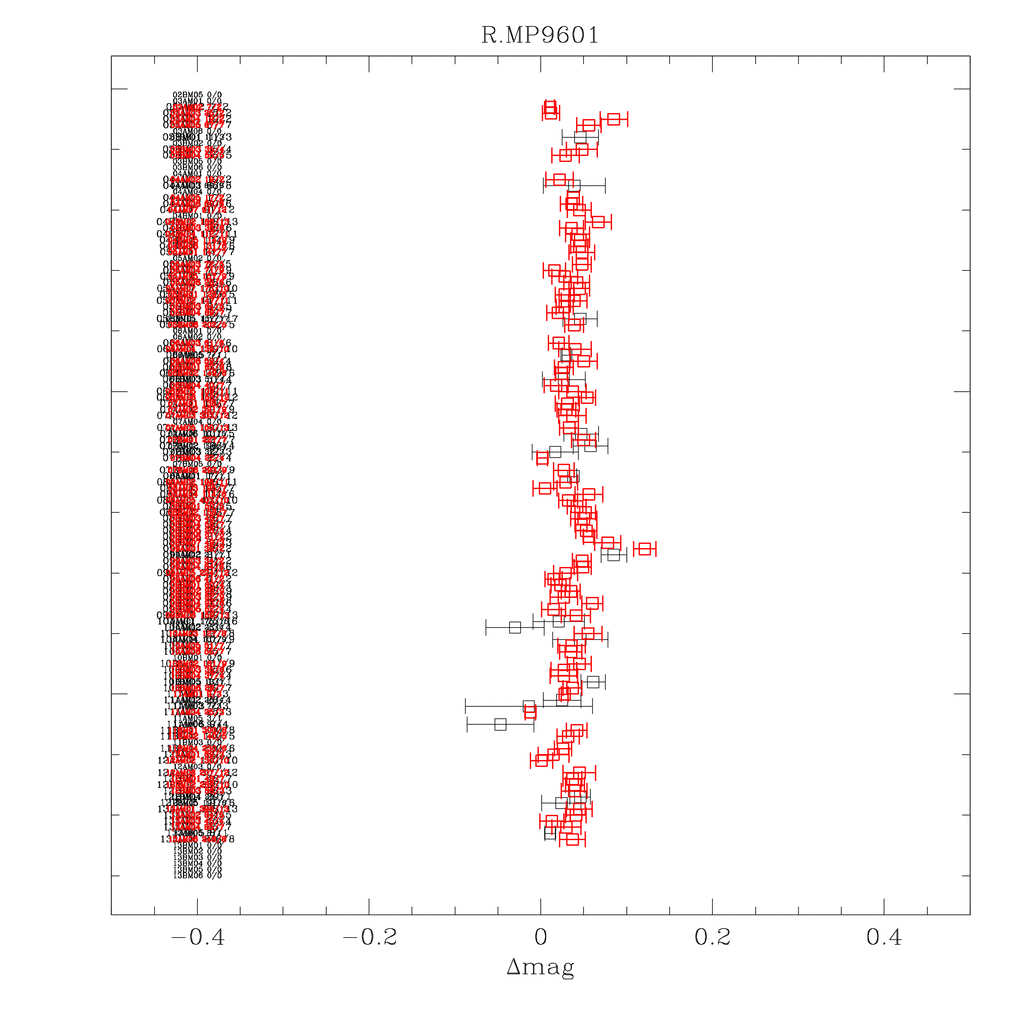
Zero point history for the old i-band
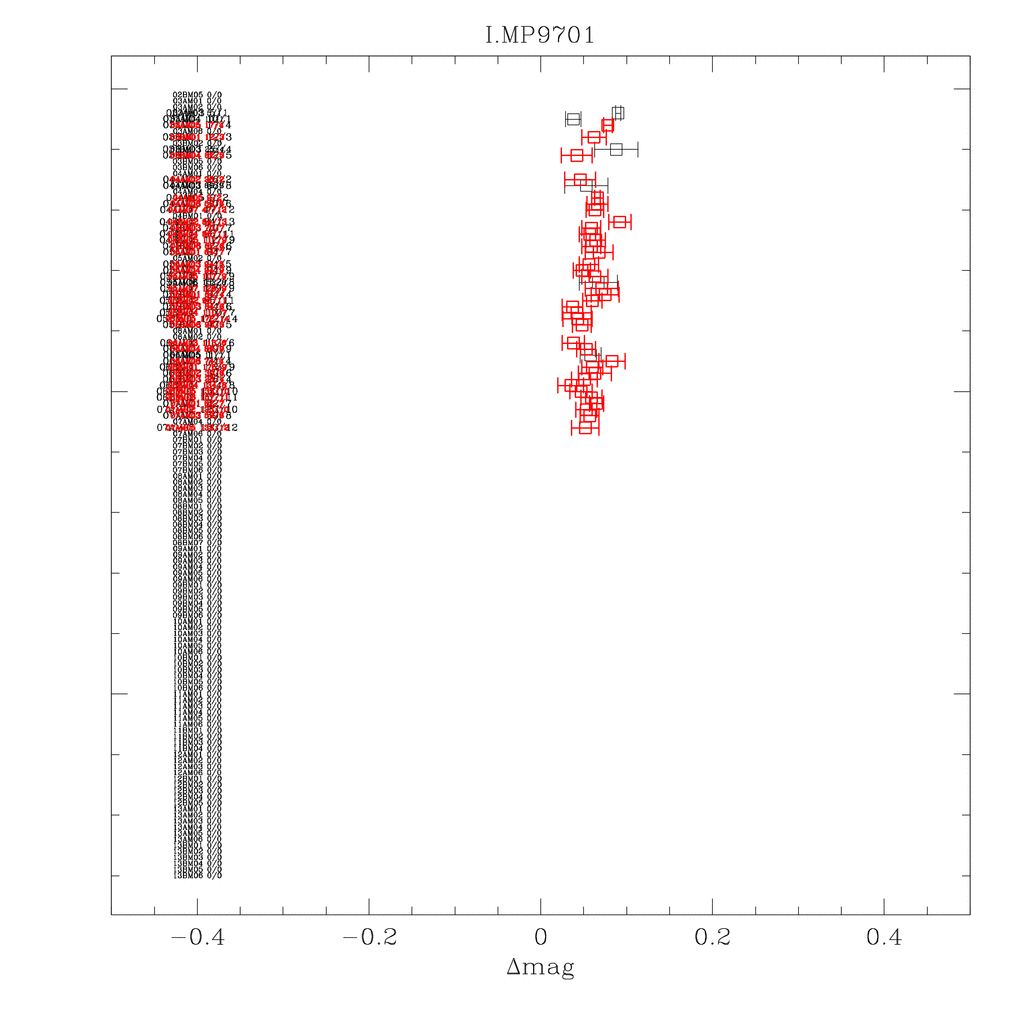
Zero point history for the new i-band
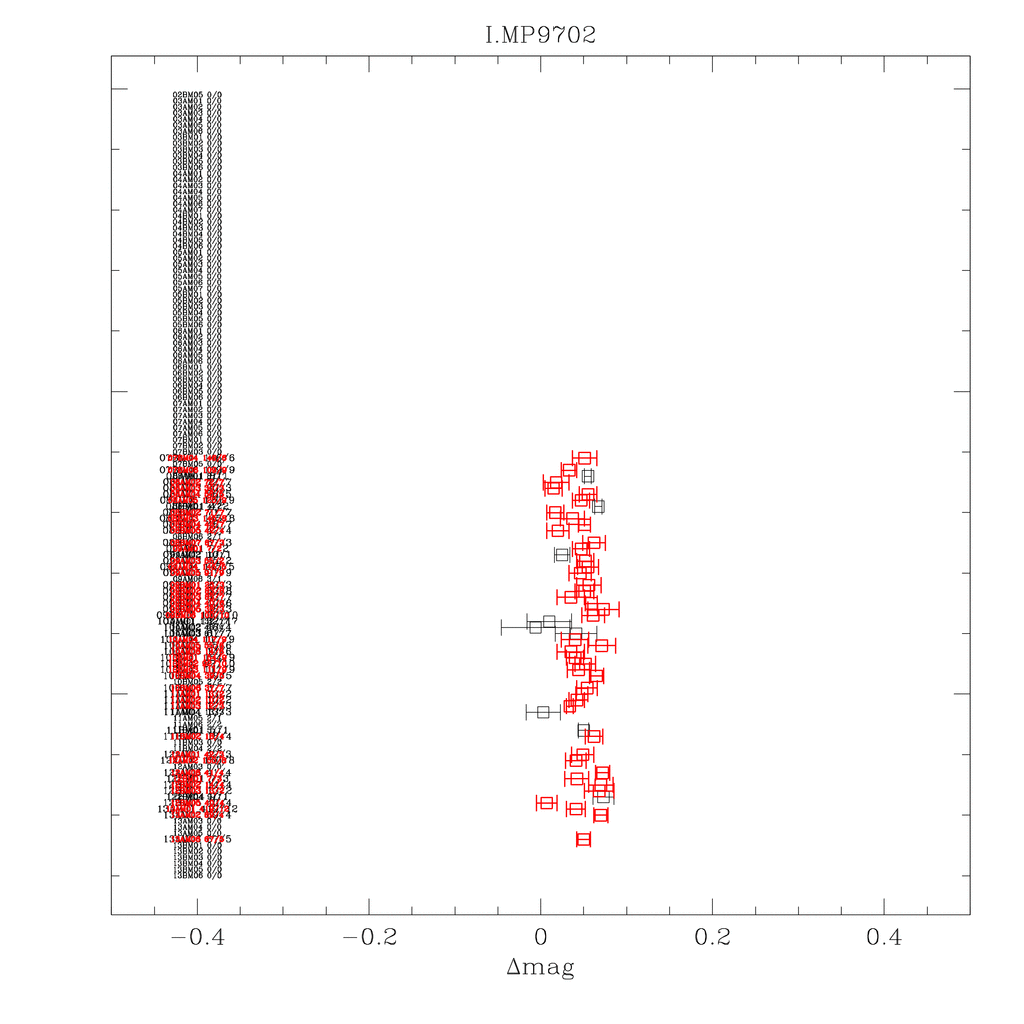
Zero point history for the z-band
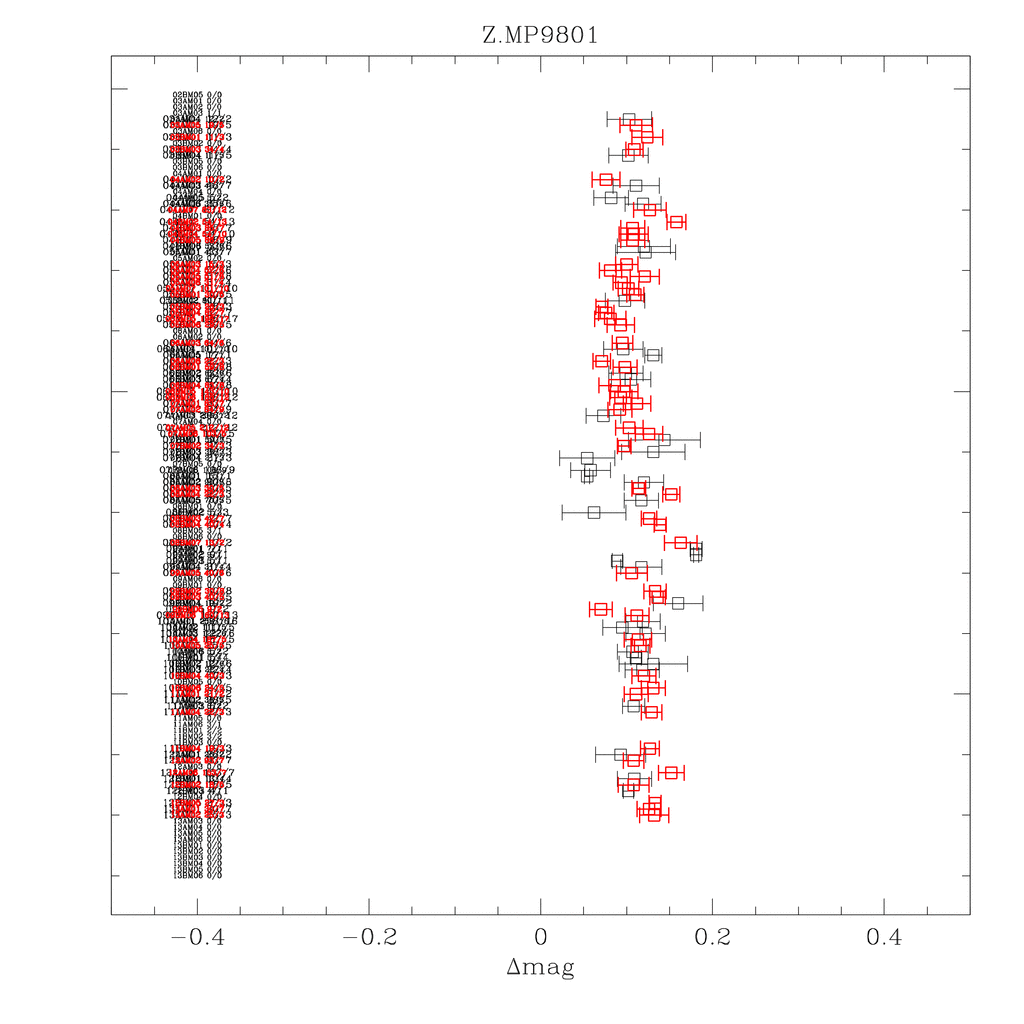
Note that in all cases there is small but measurable difference between the SDSS zero-point and the Elixir zero-point. For all the filters but u, using an single average zero-point correction may be acceptable. These average zero-point corrections (which should be added to the Elixir zero-points) are as follows:
U.MP9301 -0.031 G.MP9401 0.048 R.MP9601 0.036 I.MP9701 0.051 I.MP9702 0.028 Z.MP9801 0.094
The run-by-run scatter about the central offset is only about 0.03 magnitudes, with few exceptions. For the u filter, on the other hand, if one wishes to avoid zero-point errors of up 0.25 magnitudes a correction must be applied to the Elixir zero-point. The values in the table of corrections should be added to the Elixir zero-point.
- Date modified: